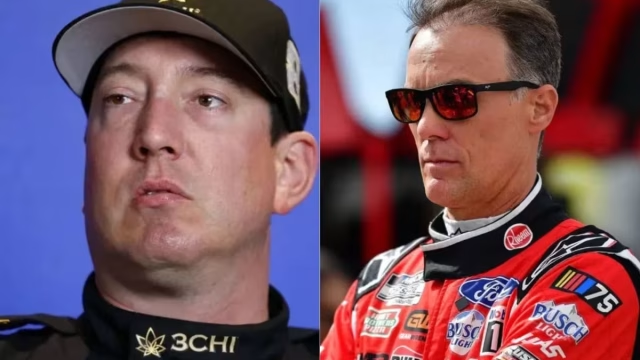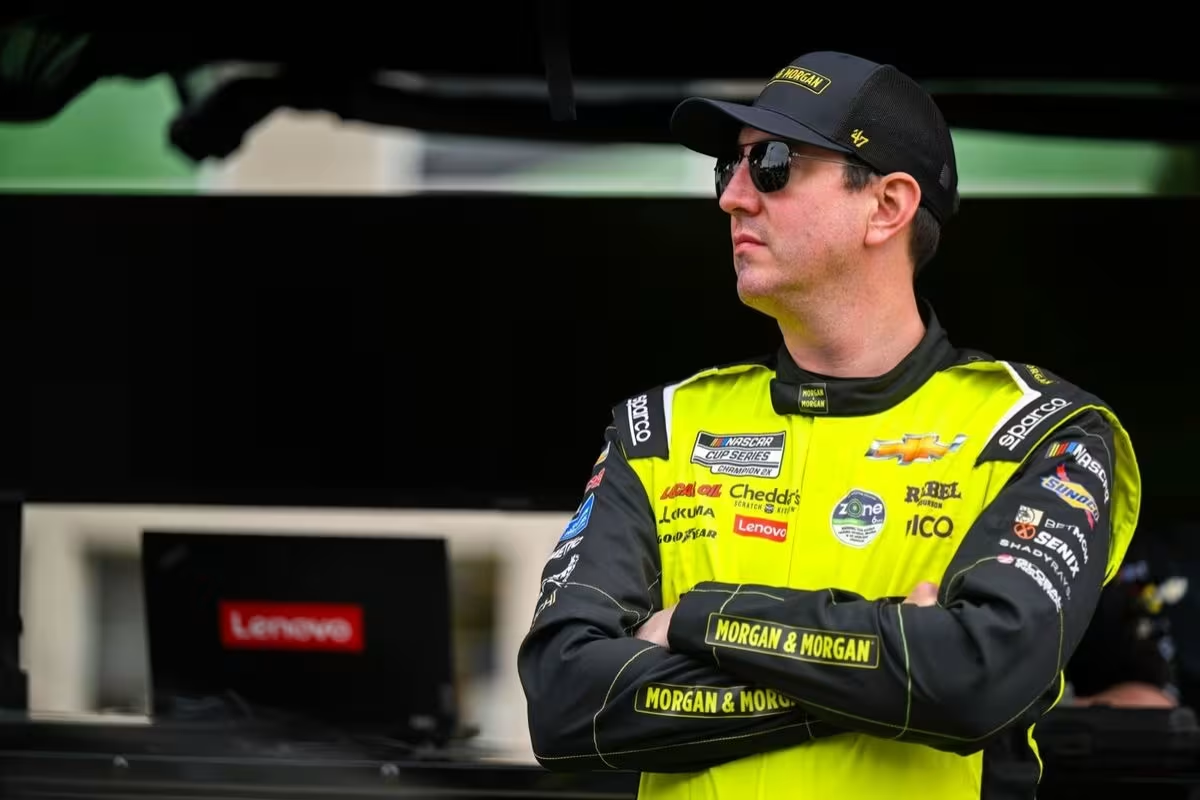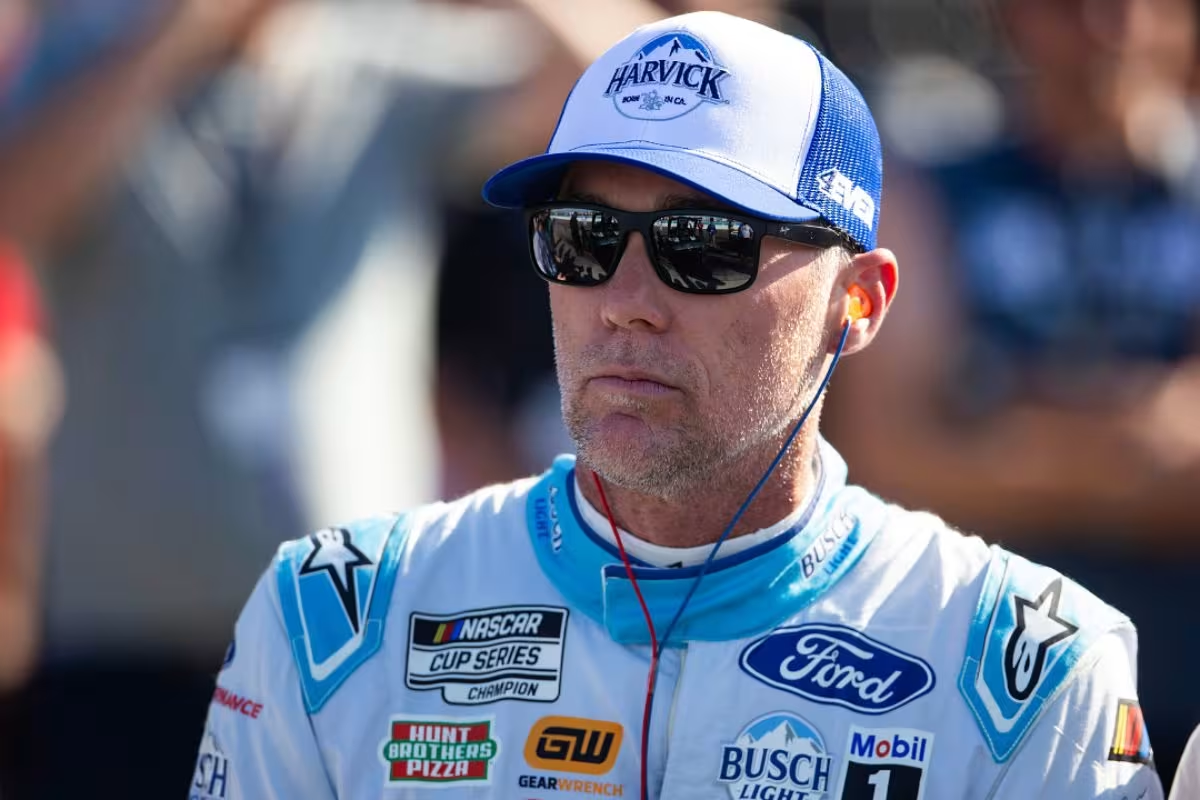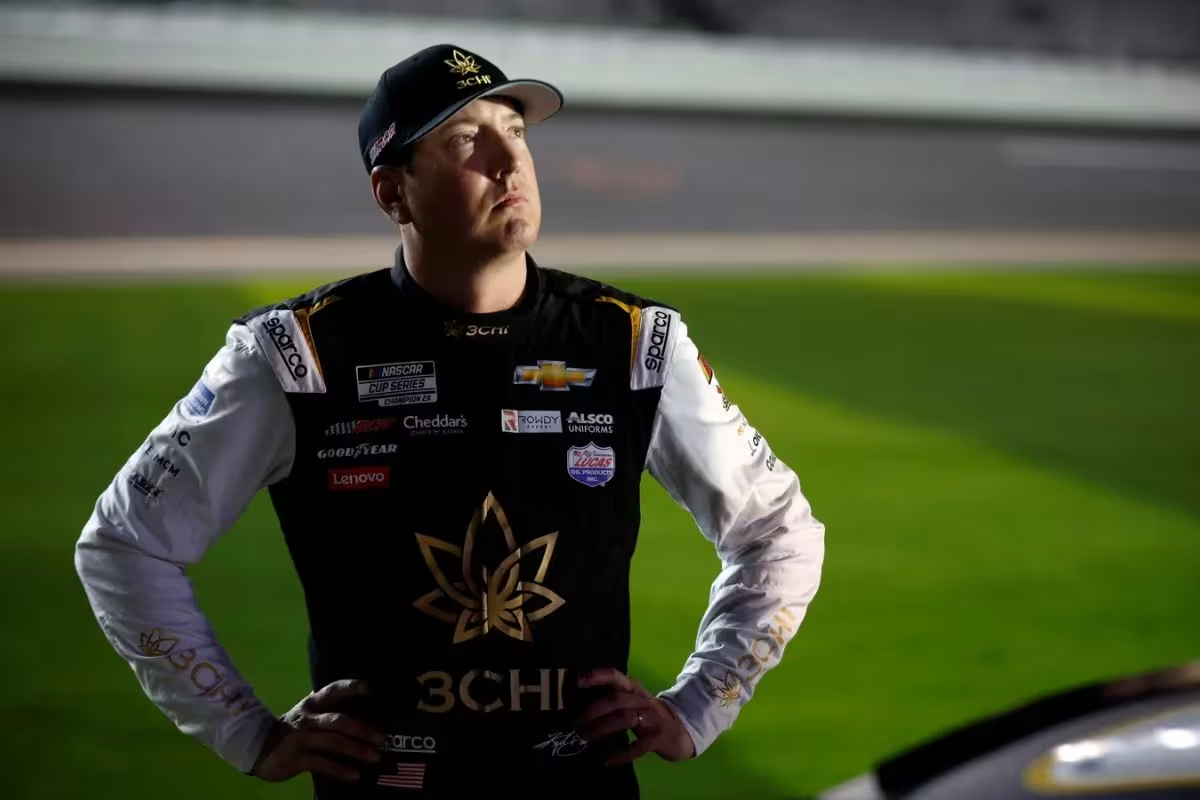Kevin Harvick’s Harsh Reality Check for Kyle Busch: Kevin Harvick‘s critique of Kyle Busch reveals a troubling pattern that raises questions about Busch’s ability to harness his competitive spirit effectively. Harvick suggests that Busch’s aggressive driving and impatience, particularly evident in his recent spin-out at Kansas, may be undermining his potential. This hampers his performance in the current season and risks tarnishing his legacy in the sport. As these dynamics unfold, one must consider: will Busch adapt to the challenges of the Next Gen car, or will his tendencies continue to hinder his progress?
Key Highlights
- Kevin Harvick emphasizes that Kyle Busch’s aggressive driving style contributes to his lack of control and subsequent spin-outs during critical race moments.
- Busch’s impatience, especially in lapping competitors, leads to impulsive decisions and self-inflicted challenges that hinder his performance.
- The sensitivity of the Next Gen car design requires racers to adapt their aggressive tactics, something Busch struggles with under pressure.
- Harvick suggests that patience and strategic adaptability are essential for Busch to navigate the evolving competitive landscape effectively.
- Busch’s current winless streak highlights the urgent need for introspection and adjustment to avoid becoming his own worst enemy in the season.
Kyle Busch’s Current Standings and Season Overview
Struggling to regain his competitive edge, Kyle Busch finds himself in a precarious position as the 2024 Cup Series season approaches its final stretch. With only six races remaining, Busch’s current standings reflect a sobering reality for a driver of his caliber—two-time Cup Series Champion yet winless this season. This is not merely an alarming statistic; it signifies a potential turning point in a storied career. If he finishes without a win, it will mark the initial time in 19 years that he has failed to secure victory in a single season.
Busch’s performance this year has been characterized by a series of near-misses, culminating in incidents that have cost him vital points and positions. The recent race at Kansas exemplifies this struggle, where a spin-out not only stripped him of the lead but also relegated him to a disappointing 19th place finish. Such setbacks raise pertinent questions about his adaptability and mental fortitude under stress, as he grapples with the weight of expectations both from himself and the NASCAR community.
This season, the competitive landscape has intensified, with emerging talents and seasoned veterans similarly vying for supremacy. As Busch navigates these challenges, he must recalibrate his approach if he hopes to shift the momentum in his favor.
Impatience and the Spin-Out Incident
Impatience has emerged as a notable factor in Kyle Busch’s recent performance, particularly highlighted by the spin-out incident during the Kansas race. Busch, enjoying a comfortable lead, faced stress from Ross Chastain’s No. 1 car. In a moment of haste, he attempted to lap Chase Briscoe during stage 3, which ultimately led to a critical misjudgment on lap 235. As Busch sought to navigate past Briscoe, a combination of poor decision-making and the unpredictable nature of aerodynamics resulted in Busch crashing into the wall.
This incident serves as a case study in the consequences of impatience in high-stakes racing. Busch’s desire to maintain his lead clouded his judgment, showcasing how even seasoned drivers can succumb to the strains of competition. The aftermath of the spin-out not only impacted Busch’s standing in the race but also reflected a broader narrative of self-inflicted challenges that can derail a promising season.
Kevin Harvick’s Analysis of the Spin-Out
A critical examination of Kyle Busch’s recent spin-out reveals insights from veteran driver Kevin Harvick, who articulated the complexities surrounding the performance of the Next Gen car. Harvick noted that Busch’s aggressive driving style, which once thrived in the competitive environment of older models, is now leading to detrimental outcomes. The urgency for Busch to secure a victory seems to cloud his judgment, causing him to push the limits beyond what the new car can handle.
“I think that Kyle is so wound up about trying to get that car into victory lane and pressing the issue. With the old car, you could press the issue, and that was part of what made Kyle Busch so good. You could press the issue, slide the car around, take chances, and do things. But with this car, you press the issue, and if you get in certain situations, the car spins out. And we’ve seen that happen to Kyle so many times.” – Harvick
Key observations from Harvick’s analysis include:
- Increased Sensitivity: The Next Gen car’s design is more sensitive to aggressive maneuvers, requiring a detailed approach to driving.
- Loss of Control: Busch’s desperation to win compromises his ability to maintain control during critical moments.
- Need for Adaptation: Shifting to the Next Gen car demands a change in strategy that Busch has yet to fully accept.
- Pressing the Issue: Harvick emphasized that pushing too hard can lead to catastrophic failures, as seen in Busch’s spin-out.
“I think he’s in such a big hurry to try to make something happen, but you can’t make it happen. There was nowhere for those guys. Ross was not going anywhere.”
“I think he gets impatient in these situations because he wants to make it happen so freaking bad, right? And he winds up getting himself in more trouble by forcing the issue than just letting it play out. It would have still been better off if the 1 car got beside him, yeah, for sure, and they had to wait another corner.” – Harvick
While Busch’s historical skill in steering through high-pressure situations is significant, the new challenges presented by the Next Gen car necessitate a reevaluation of tactics.
Understanding the limitations of the vehicle and tempering ambition with tactical foresight may well be the key to revealing Busch’s potential in this evolving landscape.
Kyle Busch’s Reaction After the Kansas Race
Following the analysis provided by Kevin Harvick regarding Kyle Busch’s recent performance, Busch’s reaction after the Kansas race reflected the weight of his frustrations. Harvick articulated a critical perspective on Busch’s impulsive action during the race, attributing it to impatience—a trait that seems to plague Busch in high-stakes situations.
With considerable laps remaining, the urgency to secure a win appeared to cloud Busch’s judgment, leading to a risky attempt that ultimately culminated in failure.
This race was particularly crucial for Busch, marking a noteworthy downturn in his season, as he faced the grim reality of potentially missing the playoffs for the initial time in over a decade. Harvick’s insights highlight that Busch’s propensity to force situations may stem from a desire to maintain his legacy of annual victories, a record that has stood for nearly two decades.
The stakes have never been higher for Busch, and with his playoff streak now at risk, the tension mounts. In the aftermath of the Kansas race, Busch’s subdued demeanor spoke volumes; he refrained from elaborating on the events, indicative of a deeper frustration simmering beneath the surface.
The implications of his performance extend beyond a single race, potentially influencing his career path and legacy within the sport. As Busch grapples with these challenges, the question remains whether he can recalibrate his approach to regain control over his racing destiny.
Busch’s Post-Race Thoughts and Future Outlook
Although the Kansas race ended in disappointment for Kyle Busch, his reflections reveal a complex interplay of tension and expectations that have defined his season. The veteran driver found himself under immense strain, particularly with Ross Chastain closely pursuing him. In the heat of the moment, Busch made impulsive decisions that ultimately derailed his chances for a successful finish.
Busch’s post-race comments illuminated his frustrations, particularly regarding Chase Briscoe’s resistance to yielding his position. He noted a clear contrast between past and present racing etiquette, lamenting that lapped drivers no longer prioritize allowing leaders to pass. This miscalculation led to Busch’s collision with the wall, further compounding his woes. His emotional response—“I’m numb. I don’t know what to do”—captures the weight of his current predicament.
Key takeaways from Busch’s reflections include:
- The importance of situational awareness during high-stress moments.
- The necessity of maintaining composure to make tactical decisions.
- Acknowledgment of evolving racing dynamics and their impact on strategy.
- The urgent need for consistency as the season progresses.
Despite the struggles, Busch’s team shows promise, suggesting that the potential for redemption remains. As he approaches the final six races, the challenge lies not only in executing race strategies but also in overcoming the psychological barriers that have hindered his performance.
News in Brief: Kevin Harvick’s Harsh Reality Check for Kyle Busch
Kyle Busch’s recent challenges on the track emphasize noteworthy issues related to his aggressive driving and impatience, particularly evident during the Kansas spin-out. Kevin Harvick’s analysis highlights the essential need for Busch to recalibrate his approach to the Next Gen car, prioritizing tactical awareness and patience. Failure to address these concerns may not only hinder race performance but could also impact Busch’s long-term legacy in the sport. Adaptation and reflection are imperative for future success.
ALSO READ: Noah Gragson’s Cryptic Clue About Kevin Harvick’s Legacy: “4 l Was Told”



